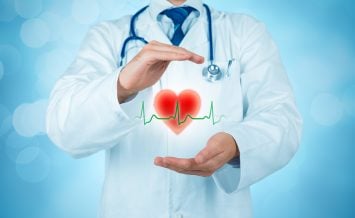Choose the right tools for the great autumn tidy-up
So, are you ready for the great garden tidy-up, when you empty pots of worn-out summer bedding, prepare your lawn for winter, trim hedges and rake leaves?
There are a range of tools which will help you make light work of the most arduous jobs.
Invest in pruning tools

Choose secateurs carefully
Some pruning can be done in the autumn to get rid of dead wood and help shape shrubs and trees for the following year. Secateurs are essential for this job and there are two types, anvil and bypass.
The anvil works on the principle of a sharp blade cutting down on to an anvil, but the cutting blade needs to be kept really sharp for it to be effective. Bypass secateurs work whereby a sharp curved blade bypasses a curved cutting plate, severing a branch without much effort.

Saws and secateurs are essential in autumn
You shouldn’t be trying to cut a branch with a diameter thicker than 1cm (0.5in) with secateurs. Any thicker and you should opt for a pruning saw such as the Silky, a Japanese blade with teeth with three razor-edged facets which cut smooth and don’t leave loose edges.
There are pocket types available, where the blade folds into the handle until you need to use it, which are handy for carrying around routinely.

Loppers cut thicker branches
If you are hard-pruning overgrown shrubs, loppers are invaluable. Some versions come with extendable arms for those branches which are just out of reach, and they are ideal for cutting out old congested wood from inside thorny shrubs such as berberis and roses, but they are also good for reducing the size of large branches you have already cut off with the saw, to make them more manageable to take to the your local recycling centre.
Long-reach pruning

Tree pruning may require extendable poles
Pole pruners are also useful when it comes to shrubs that are too tall to reach and the ground’s too uneven to safely place a ladder. These are basically secateurs attached to an extendable pole, operated by a trigger at the gardener’s end of the pole. You may not be able to cut as accurately as you’d like, but it won’t matter if the trees or shrubs are vigorous.
Rake it up

RHS lawn rake
If you have plenty of trees, you’re going to need a decent lawn rake to gather up the leaves which have amassed on your lawn or in your flowerbeds. If not dealt with, leaves can harbour pests and diseases over winter and could leave you with a shed load of problems next year.
Use either a wide fan-shaped springy metal rake for the job or a similar plastic version. The important thing is that the rake achieves a good span of the area and preferably has forks which curve inwards at the end, to allow a maximum sweep. Make sure your rake has a strong, long handle.
If you want to scarify your lawn, a springtine rake is ideal for the job as it will remove moss and thatch as you rake, allowing new shoots through in spring. You may also want to make use of a garden fork to make holes in the lawn to aerate it and reduce compaction, and fill the holes with sharp sand to aid drainage.
Mow away problems

Mowers collect leaves
Lawnmowers can help reduce problems with leaves on the lawn, if you just raise the blades and mow the grass, the leaves should be chopped up and collected in the grass box, ready for composting.
If your grass edges have become out of control and invaded by weeds, the perfect tool for tackling rough areas is a brushcutter, a bladed tool which will tackle long grass, brambles, weeds and nettles.
Trim hedges

Tidy up hedges
Give your hedges a trim before the winter months, but make sure you leave enough greenery for birds to nest in and be careful where you trim in case you disturb any wildlife. Electric hedgetrimmers do the job if you have a power source handy and aren’t prone to cutting through cables, but there are equally good battery-powered hedgetrimmers on the market, which provide just as good a cut and some recharge within half an hour.
Blow leaves away

Blow those leaves away
If you have a larger area, use a leaf blower to direct leaves into a pile before bagging them up for the compost bin or to make leaf mould, which can be used as a mulch on beds and borders.
Talking of mulching, if you have a lot of garden debris which you want to break down, such as thick twigs and logs, it might be worth investing in a shredder which will munch thicker clippings into an ideal mulch for your plants, but don’t put in seeding weeds, spiny prunings or diseased plants. The disadvantage of these is that they are pretty noisy, so the investment may not go down well with the neighbours.
The Press Association
Latest posts by The Press Association (see all)
- 8 things your feet can tell you about your health - January 8, 2025
- 9 ways to look after your emotional health better in 2025 - January 7, 2025
- EastEnders fans to vote on storyline for the first time in 40th anniversary week - January 7, 2025
- Aldi beats rival Lidl as cheapest supermarket of 2024 - January 6, 2025
- All the benefits of lifting weights beyond bigger muscles - January 6, 2025





















